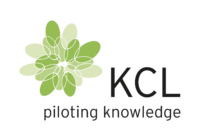Understanding microfibrillated cellulose (MFC)
Microfibrillated cellulose (MFC) is a highly versatile biomaterial derived from plant fibres. It is produced by breaking down cellulose fibres into much smaller fibrils, which are only a few nanometres in diameter. This process results in a material that has a high surface area and exceptional mechanical properties. MFC is known for its ability to enhance the strength and durability of various products, particularly in the paper industry.
At KCL, we have extensive experience in nanocellulose materials, and our MFC is meticulously designed to meet the requirements of diverse applications. Our MFC is derived from industrial agro sidestreams, specifically sugar beet pulp, a by-product of the sugar industry. By removing lignin and hemicellulose, and using purely mechanical means, we produce microfibrillated cellulose that is comparable to wood-based analogues. This process is energy-efficient and has a low carbon footprint, making it an environmentally friendly option.
Understanding the unique properties of MFC is crucial for appreciating how it can significantly improve the strength and durability of paper products. Its high surface area and mechanical strength make it an ideal additive for enhancing paper quality.
The science behind MFC’s strengthening properties
The remarkable strengthening properties of MFC can be attributed to its unique structure and composition. The microfibrils in MFC have a high aspect ratio, meaning they are much longer than they are wide. This high aspect ratio allows the fibrils to form a dense network within the paper matrix, which significantly enhances the mechanical properties of the paper.
When MFC is added to paper products, it acts as a reinforcing agent. The microfibrils interlock with the cellulose fibres in the paper, creating a strong and cohesive network. This network improves the tensile strength, tear resistance, and overall durability of the paper. Additionally, MFC can increase the stiffness of paper products, making them more robust and less prone to deformation.
Another key aspect of MFC’s strengthening properties is its ability to act as a natural binder. In coating formulations, MFC can replace synthetic latexes and other barrier materials, providing a more sustainable and environmentally friendly alternative. This not only enhances the strength and durability of the paper but also contributes to material savings in production.
Applications of MFC in paper products
MFC has a wide range of applications in the paper industry, thanks to its ability to improve paper strength and durability. One of the primary uses of MFC is in the production of high-strength paper and packaging materials. By incorporating MFC into the paper matrix, manufacturers can produce paper products that are more resistant to tearing, bending, and other forms of mechanical stress.
Another important application of MFC is in the production of lightweight paper. By enhancing the strength and stiffness of the paper, MFC allows manufacturers to reduce the amount of raw material used without compromising on quality. This results in substantial material savings and a lower environmental impact.
In addition to its use in paper production, MFC can also be used as a natural binder in coating formulations. This application is particularly valuable for creating barrier coatings that improve the moisture resistance and durability of paper products. By replacing synthetic latexes with MFC, manufacturers can produce more sustainable and environmentally friendly paper products.
Case studies: MFC’s impact on paper durability
Several case studies have demonstrated the significant impact of MFC on the durability of paper products. In one study, a paper manufacturer incorporated MFC into their paper production process and observed a substantial increase in tensile strength and tear resistance. The enhanced paper products were able to withstand greater mechanical stress, resulting in fewer product failures and improved customer satisfaction.
Another case study involved the use of MFC in the production of lightweight packaging materials. By adding MFC to the paper matrix, the manufacturer was able to reduce the weight of their packaging products without compromising on strength and durability. This not only resulted in material savings but also reduced transportation costs and environmental impact.
These case studies highlight the practical benefits of using MFC in paper production. By enhancing the strength and durability of paper products, MFC can help manufacturers produce higher-quality products while also achieving significant cost savings and environmental benefits.
How KCL leverages MFC for superior paper products
At KCL, we leverage our extensive experience in nanocellulose materials to produce high-quality MFC that meets the needs of various applications. Our MFC is derived from industrial agro sidestreams, specifically sugar beet pulp, making it an environmentally friendly and sustainable option. By removing lignin and hemicellulose and using purely mechanical means, we produce microfibrillated cellulose that is comparable to wood-based analogues.
We use our MFC to enhance the strength and durability of our paper products. By incorporating MFC into our paper production process, we can produce paper products that are more resistant to tearing, bending, and other forms of mechanical stress. This results in higher-quality products that meet the needs of our customers.
In addition to improving paper strength and durability, our MFC can also be used as a natural binder in coating formulations. This application allows us to create barrier coatings that improve the moisture resistance and durability of our paper products. By replacing synthetic latexes with MFC, we can produce more sustainable and environmentally friendly paper products.
In conclusion, microfibrillated cellulose (MFC) offers significant benefits for the paper industry. By enhancing the strength and durability of paper products, MFC can help manufacturers produce higher-quality products while also achieving significant cost savings and environmental benefits. At KCL, we leverage our extensive experience in nanocellulose materials to produce high-quality MFC that meets the needs of various applications. By incorporating MFC into our paper production process, we can produce superior paper products that meet the needs of our customers.
